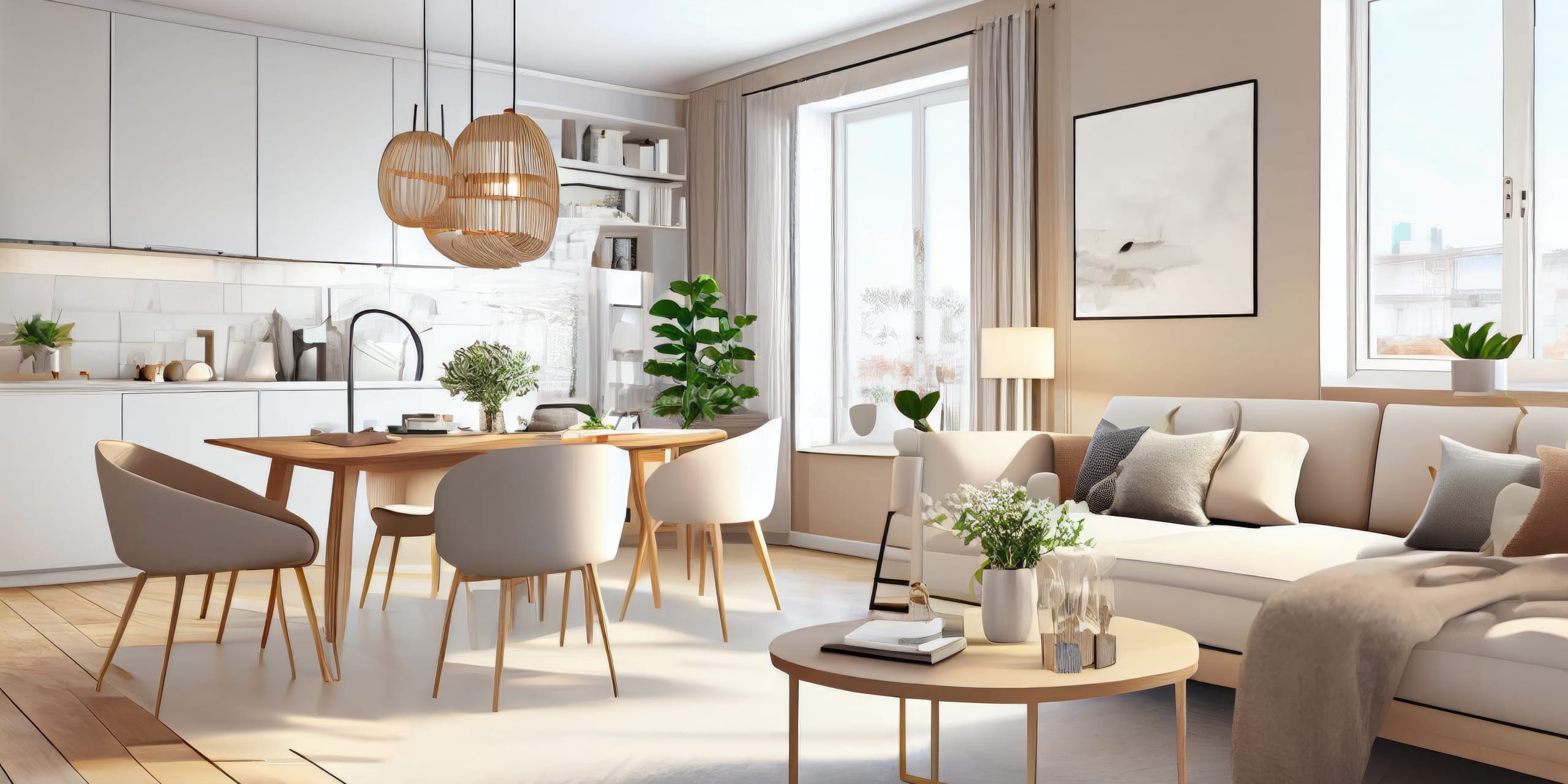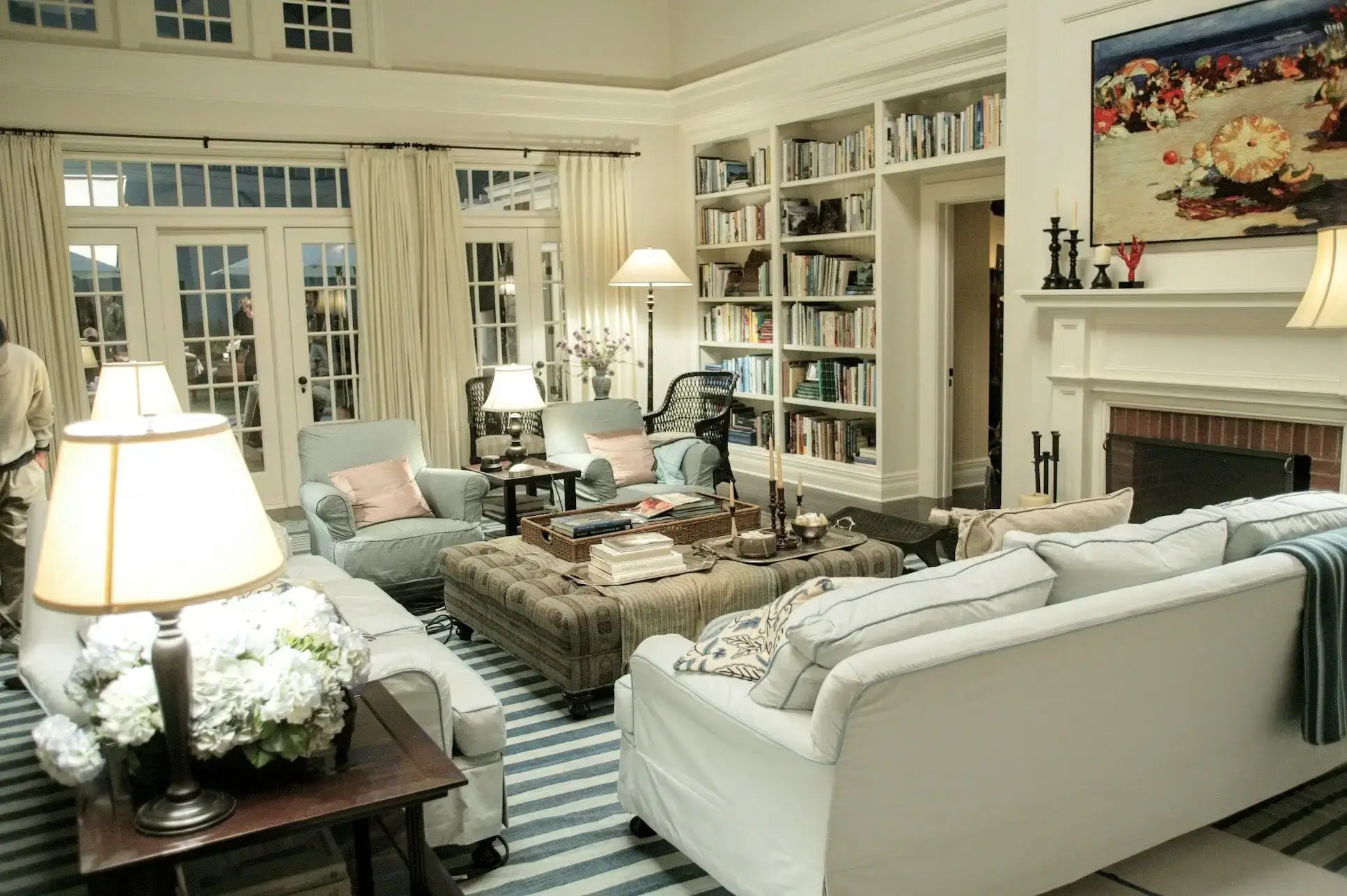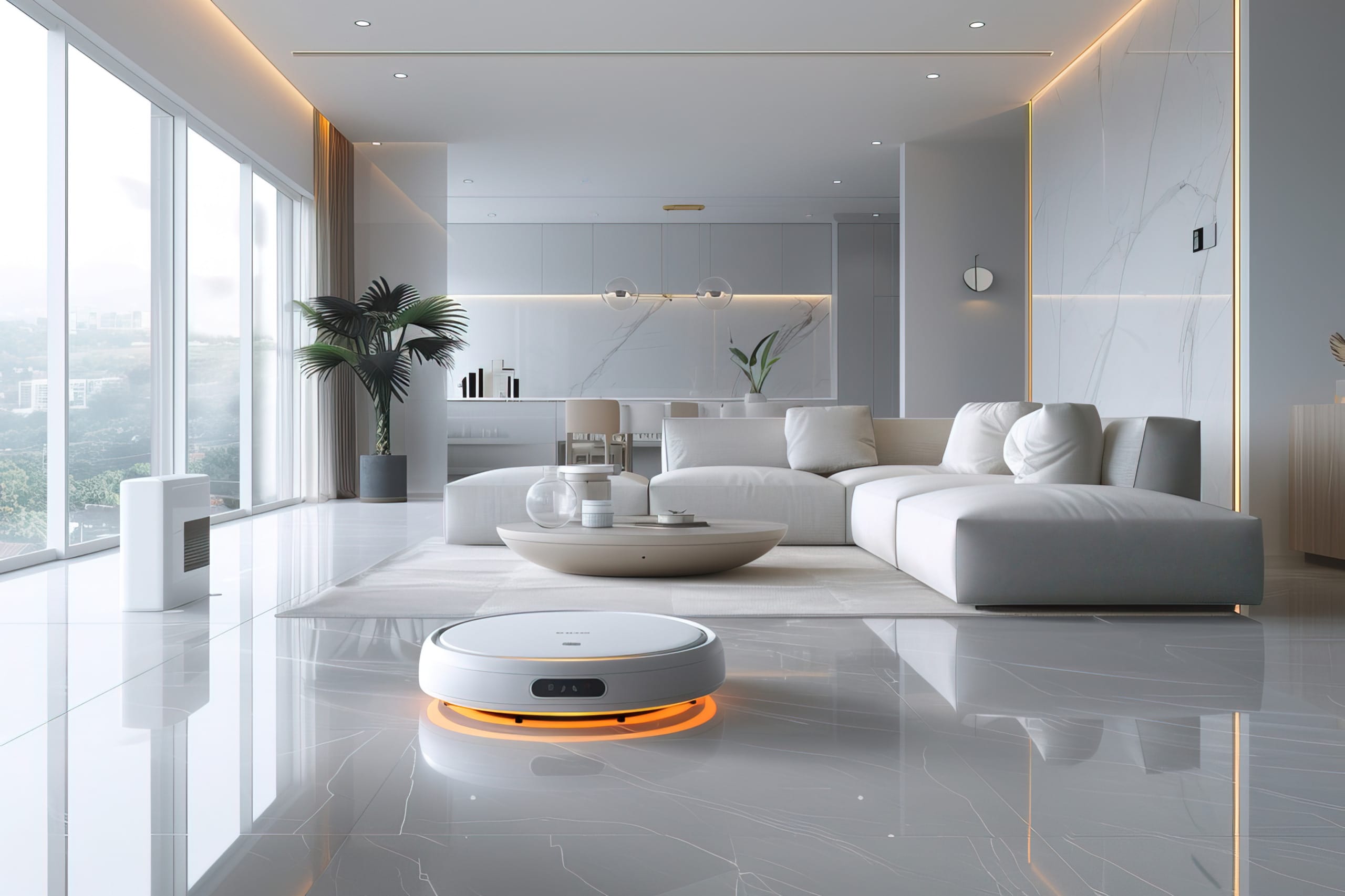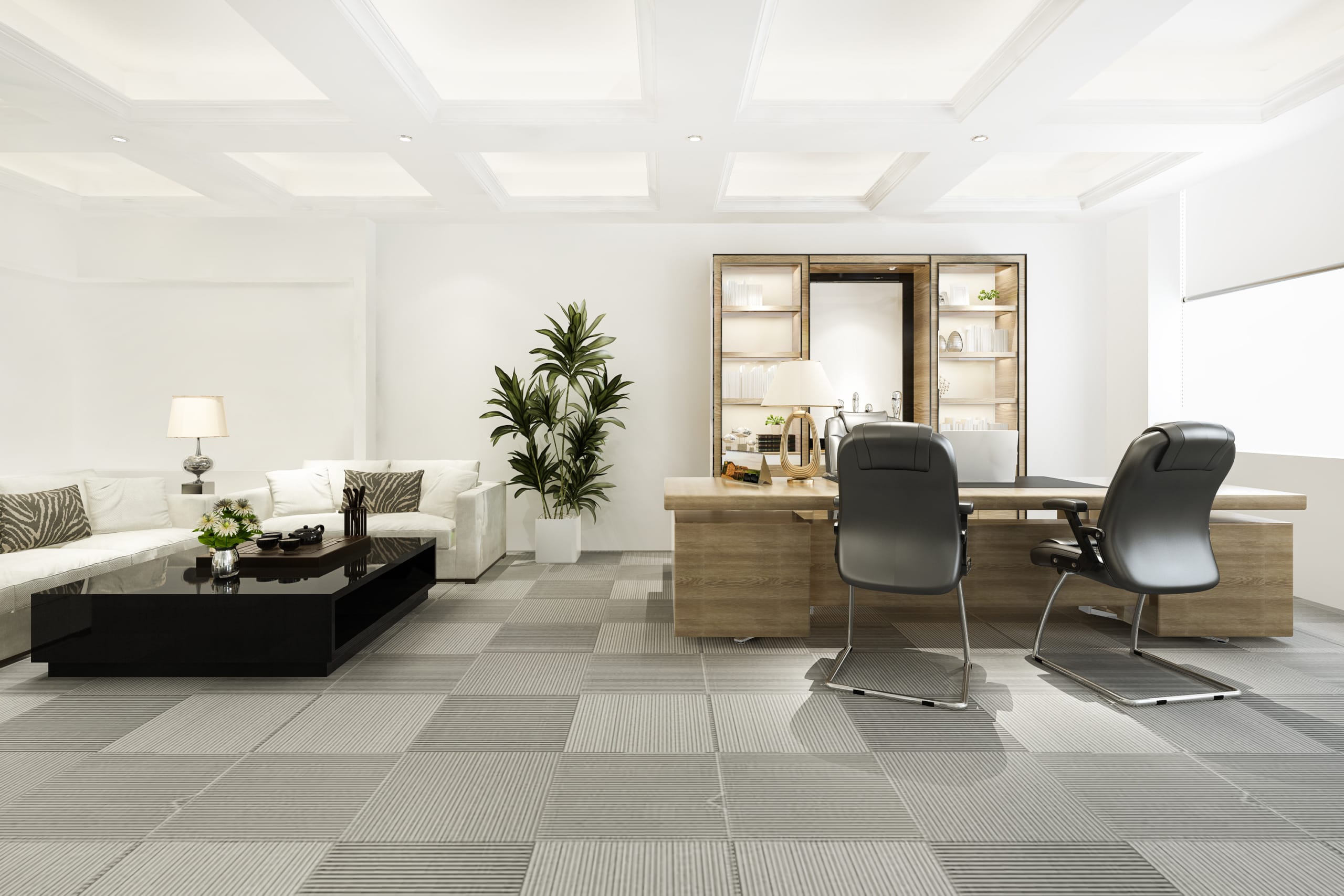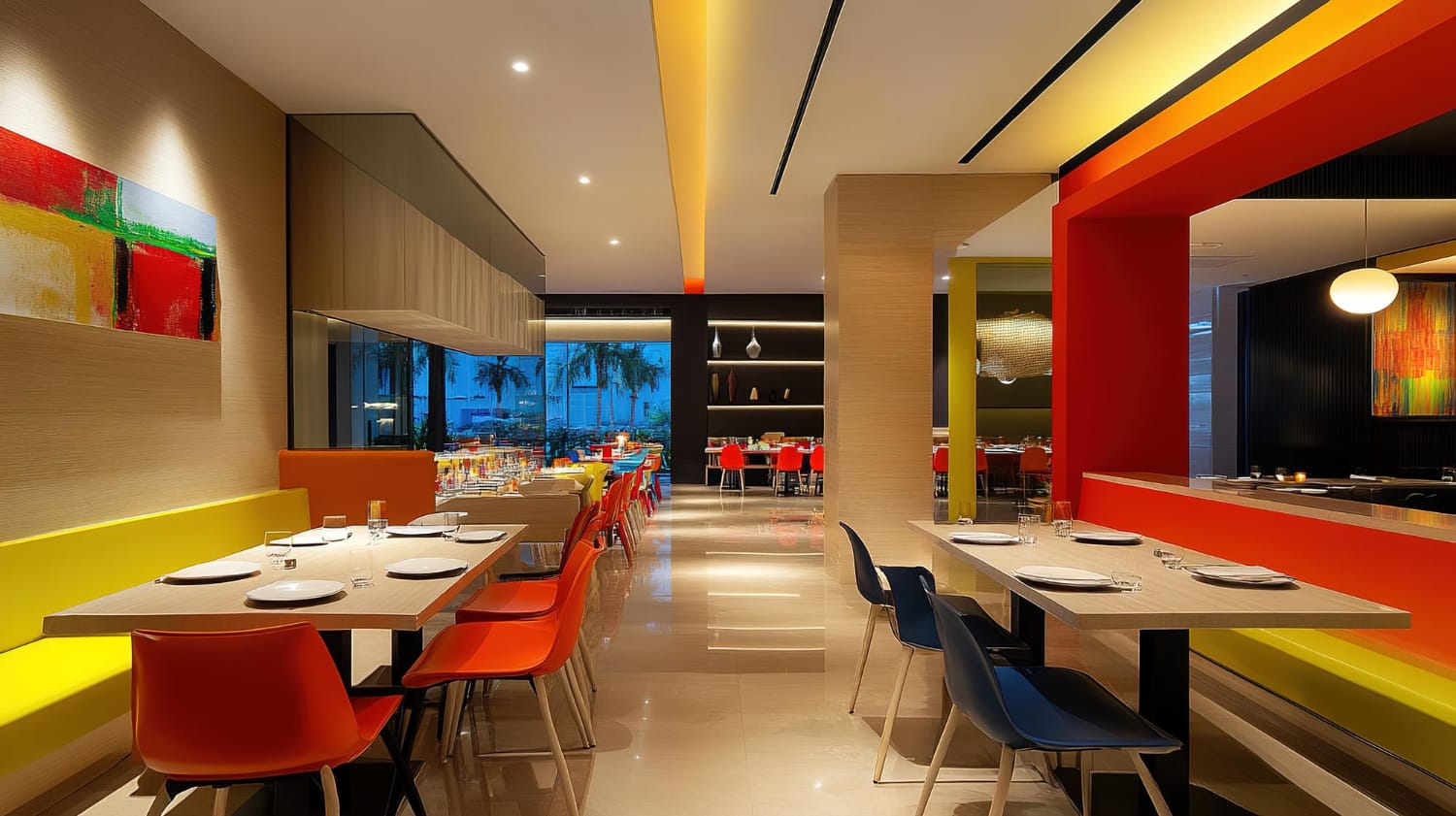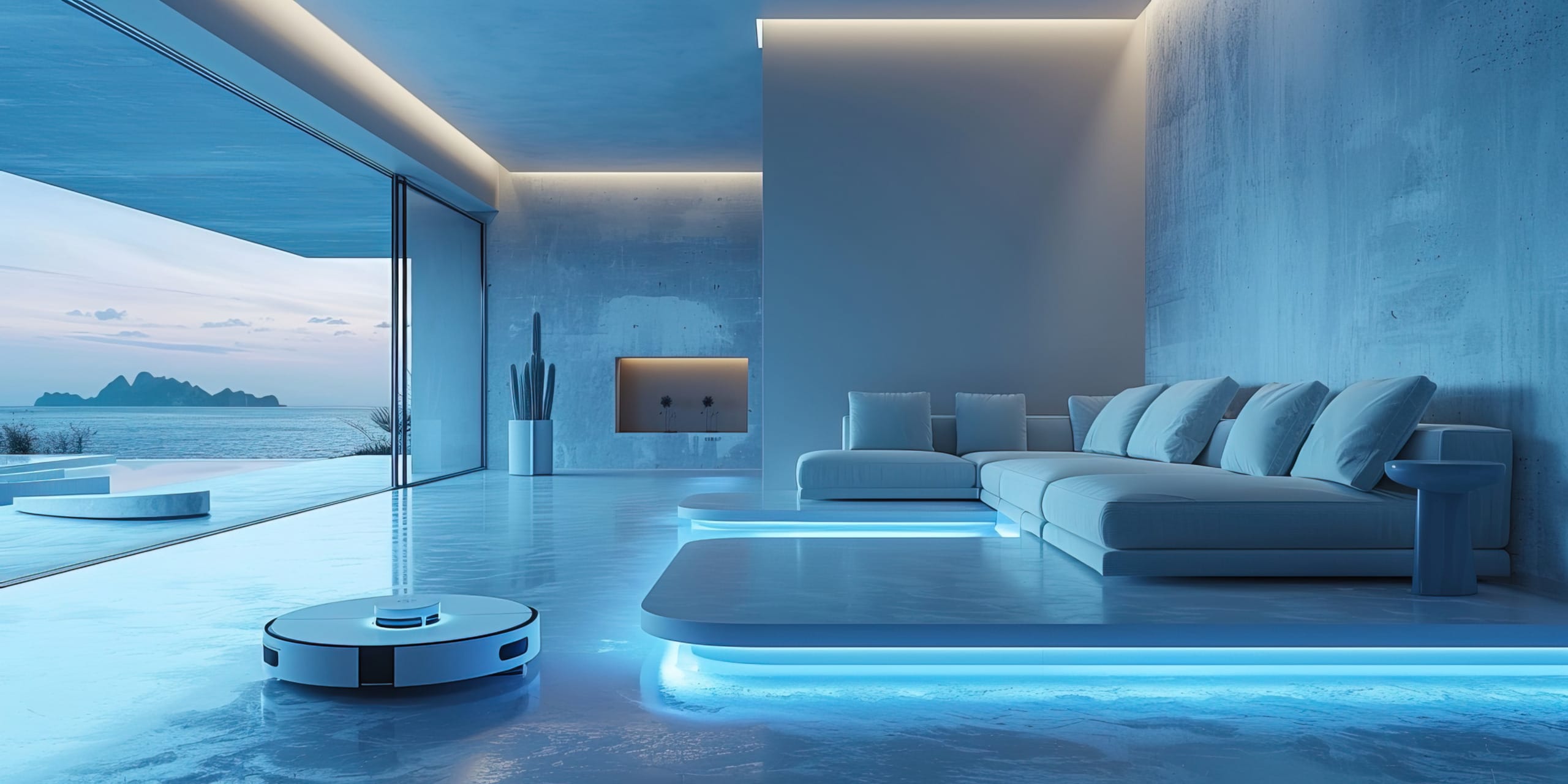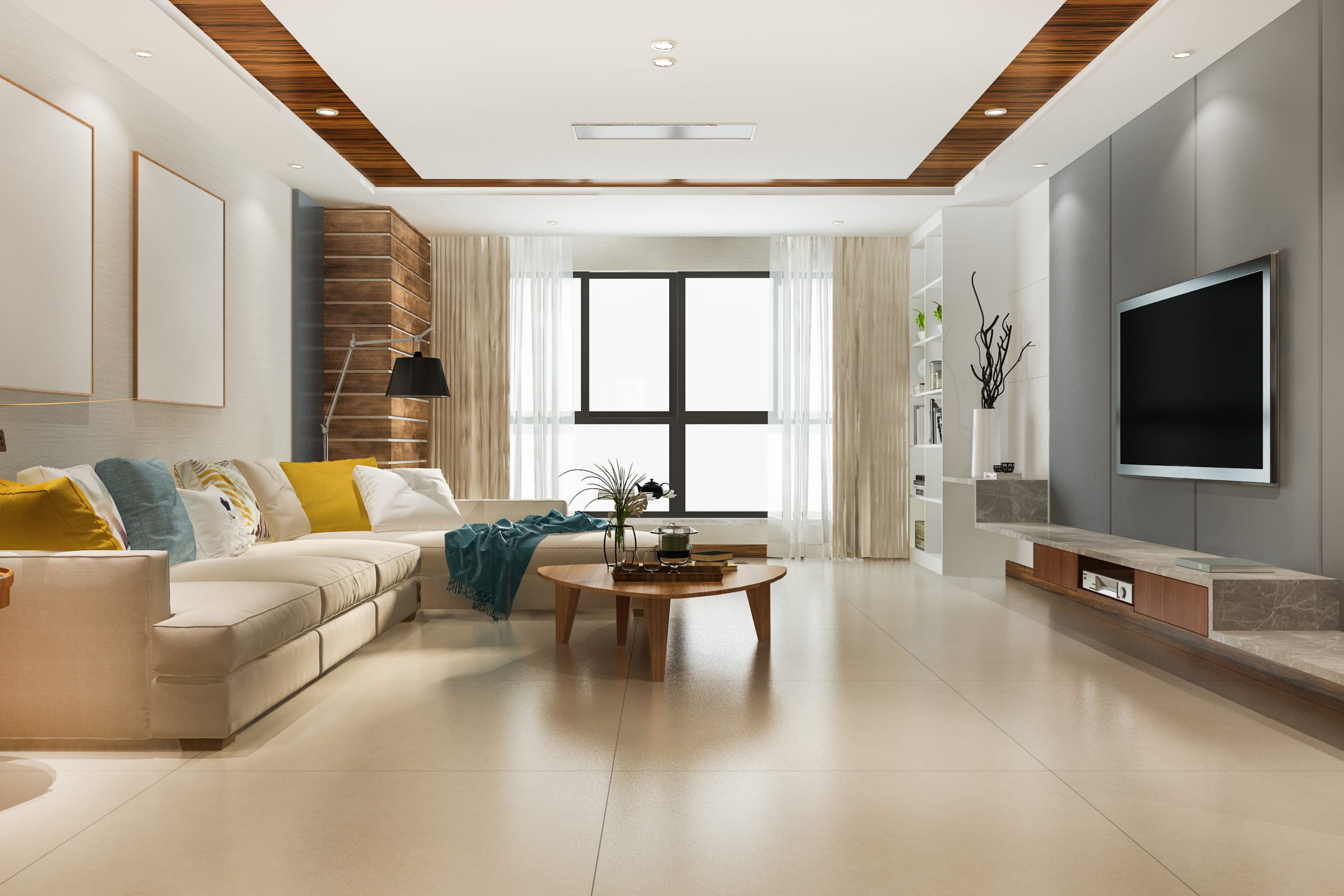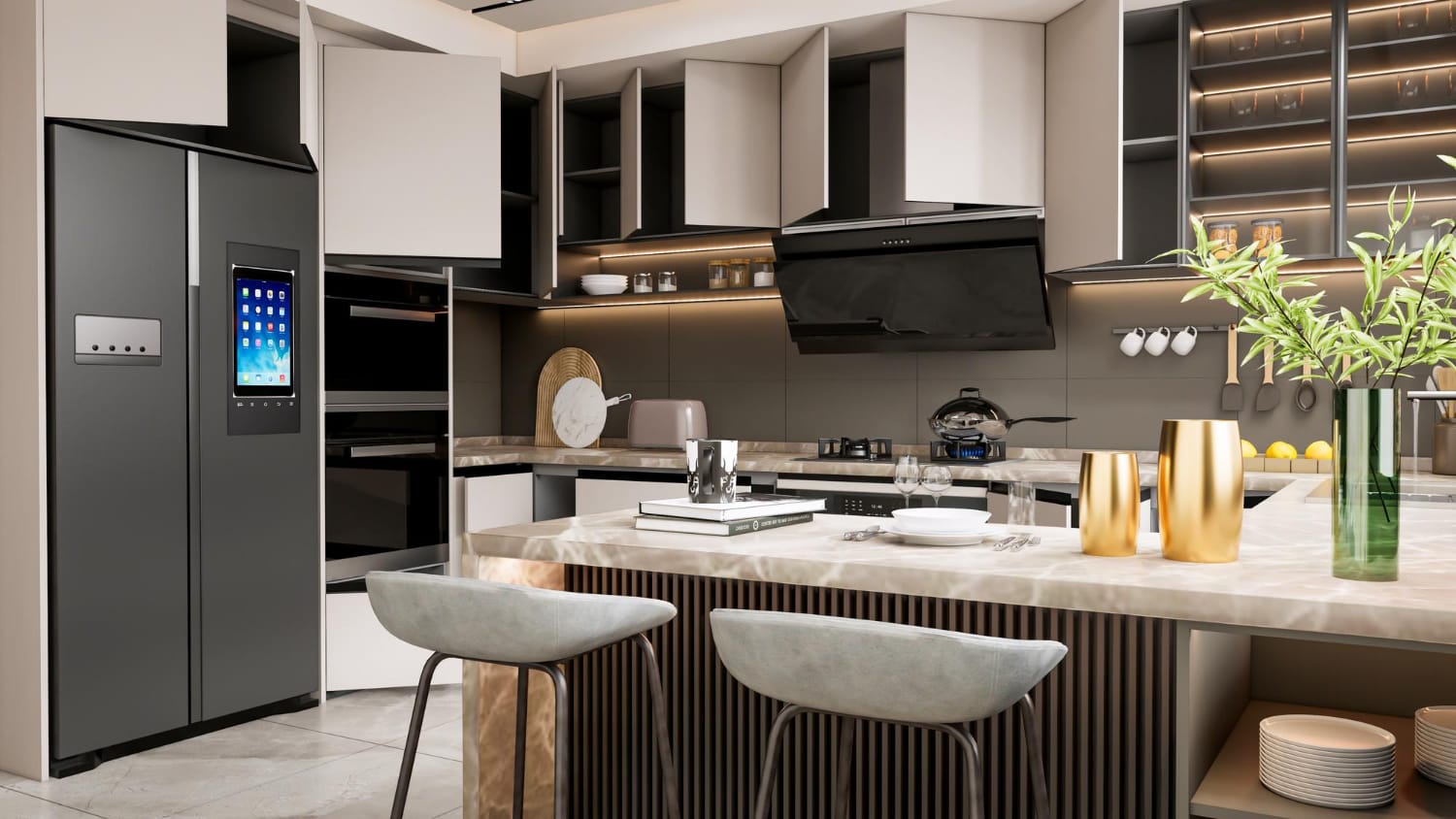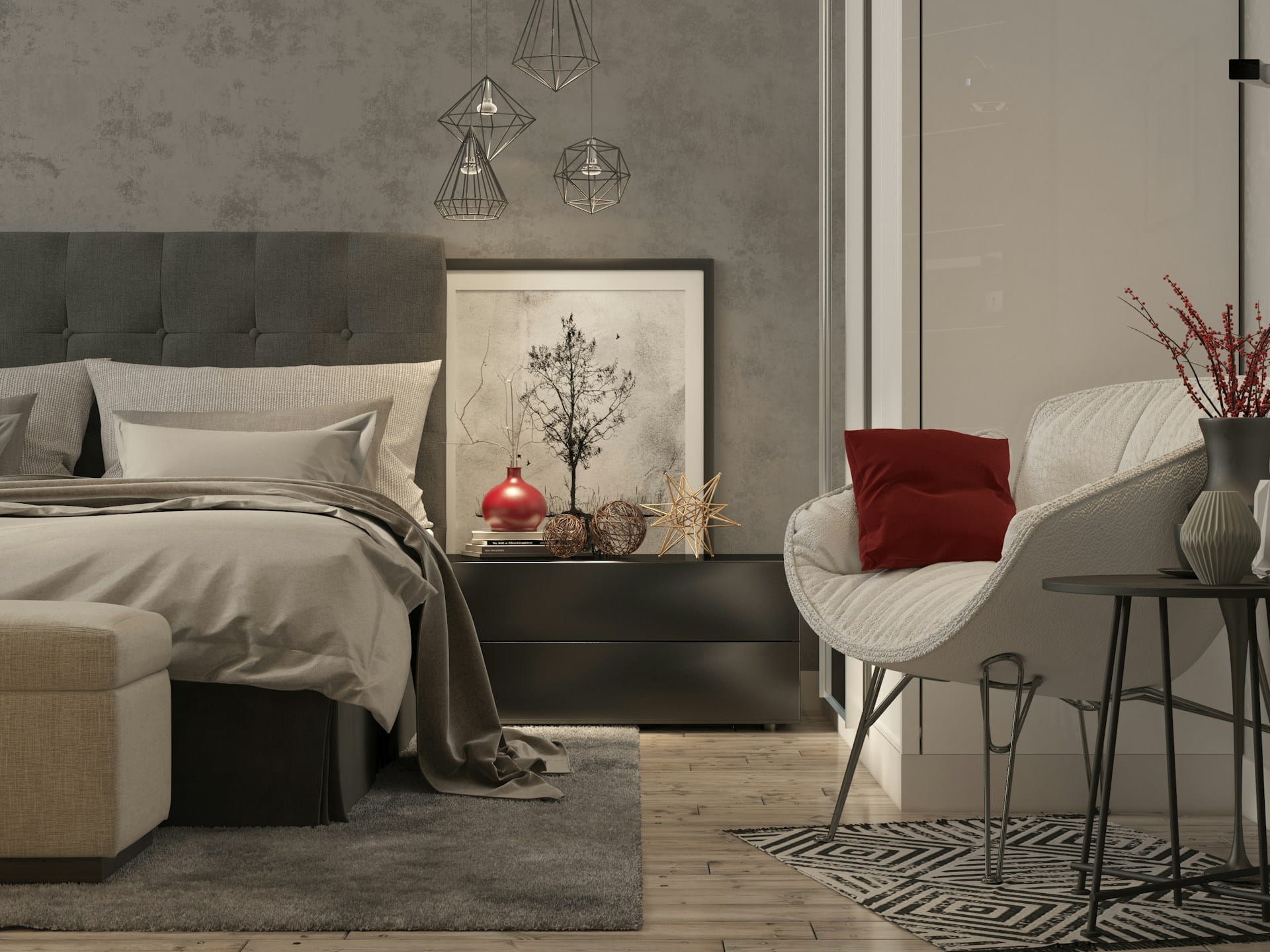Scandinavian interior design is a philosophy rooted in simplicity, functionality, and nature-inspired aesthetics. Originating from Nordic countries, this design trend has gained global admiration for its clean lines, muted color palettes, and cozy atmospheres. Whether you’re renovating your home or refreshing a single room, Scandinavian interior design offers a timeless, calming, and practical approach that fits modern lifestyles.
What is Scandinavian Interior Design?
Scandinavia relates to the geographic and cultural region of Northern Europe that includes three main countries- Sweden, Denmark, and Norway. The Nordic region can also include Finland and Iceland. Culturally, “Scandinavian” relates to the values, traditions, and lifestyle of these countries, known for simplicity, functionality and love for nature.
Scandinavian interior design is a design style that originated in Scandinavia in the early 20th century and became globally popular for its minimalist aesthetic (clean lines, clutter-free), functional furniture, light color palette (whites, neutrals, pastels), natural materials (wood, leather, linen), emphasis on coziness and comfort (also known as hygge), use of natural light and large windows It’s all about creating peaceful, beautiful, and practical living spaces that feel warm and inviting without overdoing it in decor.
How to Apply Scandinavian Design Ideas
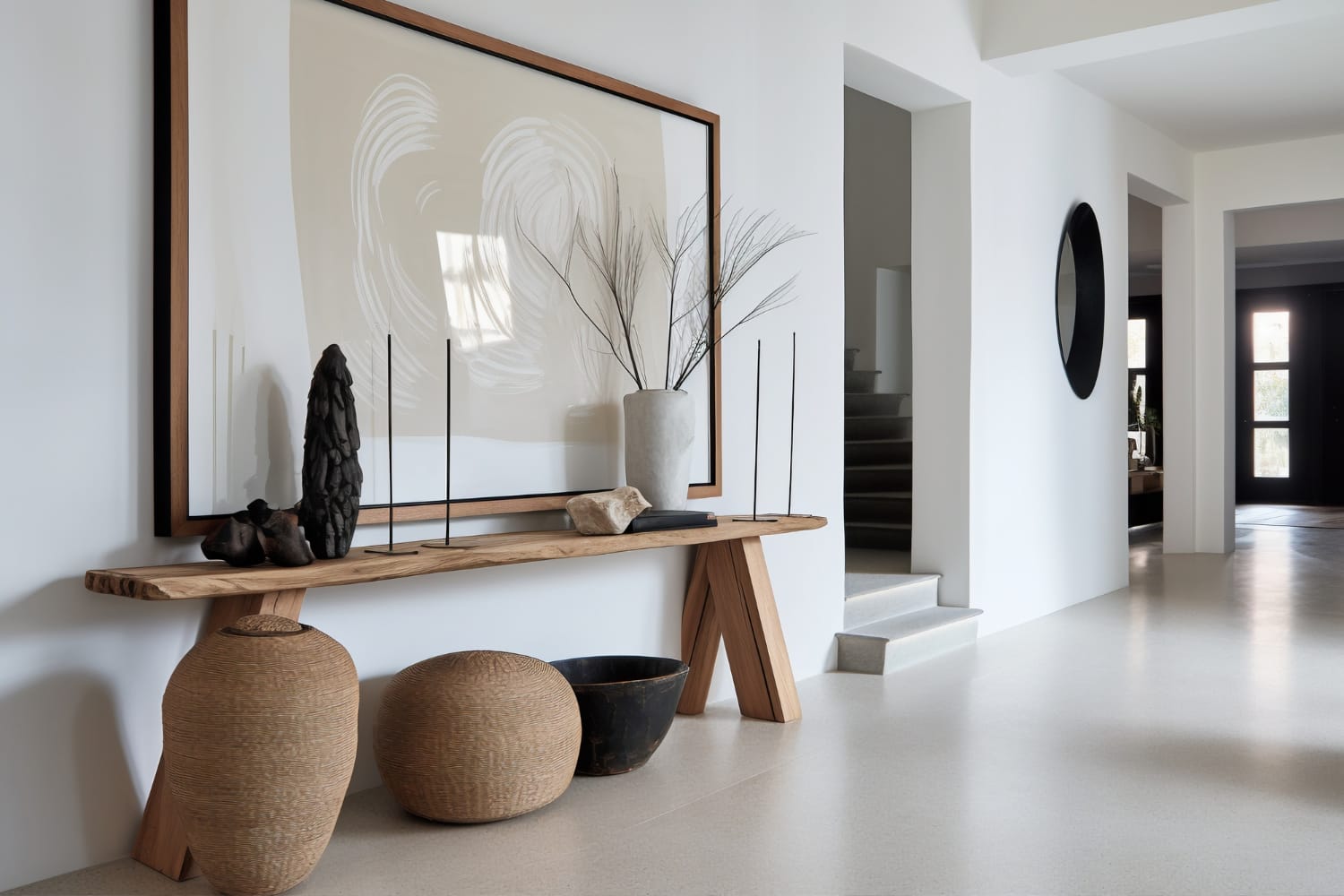
Scandinavian interior design is renowned for its calming beauty, rooted in keeping it simple, sunlight, and organic elements. In its design, it reflects a deep respect for functionality and a harmonious connection to nature. We explore the three fundamental concepts of modern interior design below: minimalism, light, and nature.
Minimalism- Keep Life Simple
At the heart of Scandinavian interior design lies simple living environment. This approach prioritizes simplicity and functionality in every corner of the home. It ends in homes that are airy, spacious, and beautifully curated. Choosing furniture, textiles, and decor that is both useful and aesthetic is the focus here. Scandinavian spaces feature open floor plans, built-in storage, and organized zones to support a stress-free environment.
Light and Brightness
One of the most noticeable features of Scandinavian home interiors is the abundance of light. Because of the long, dark winters in Nordic regions, Nordic homes are designed to capture and luminous environment as possible, leaving windows bare or draped with sheer curtains. Colors such as white walls, light greys, and soft beige colors are commonly used to add brightness and create a fresh, uplifting environment.
Connection to Nature
Scandinavian interior design is its strong connection to the natural world. Natural materials like wood, wool, leather, and stone perfectly integrate into this design style. Organic textures and handmade elements like woven baskets, raw wooden surfaces, and handmade ceramics add texture and warmth to the home while grounding it in an earthy, authentic sense. Scandinavian design also incorporates the concept of bringing the outdoors inside, for example through the use of plants and large windows with views of nature.
Scandinavian Interior Design Unique Features
Color Palette – Relaxed Modern Decor
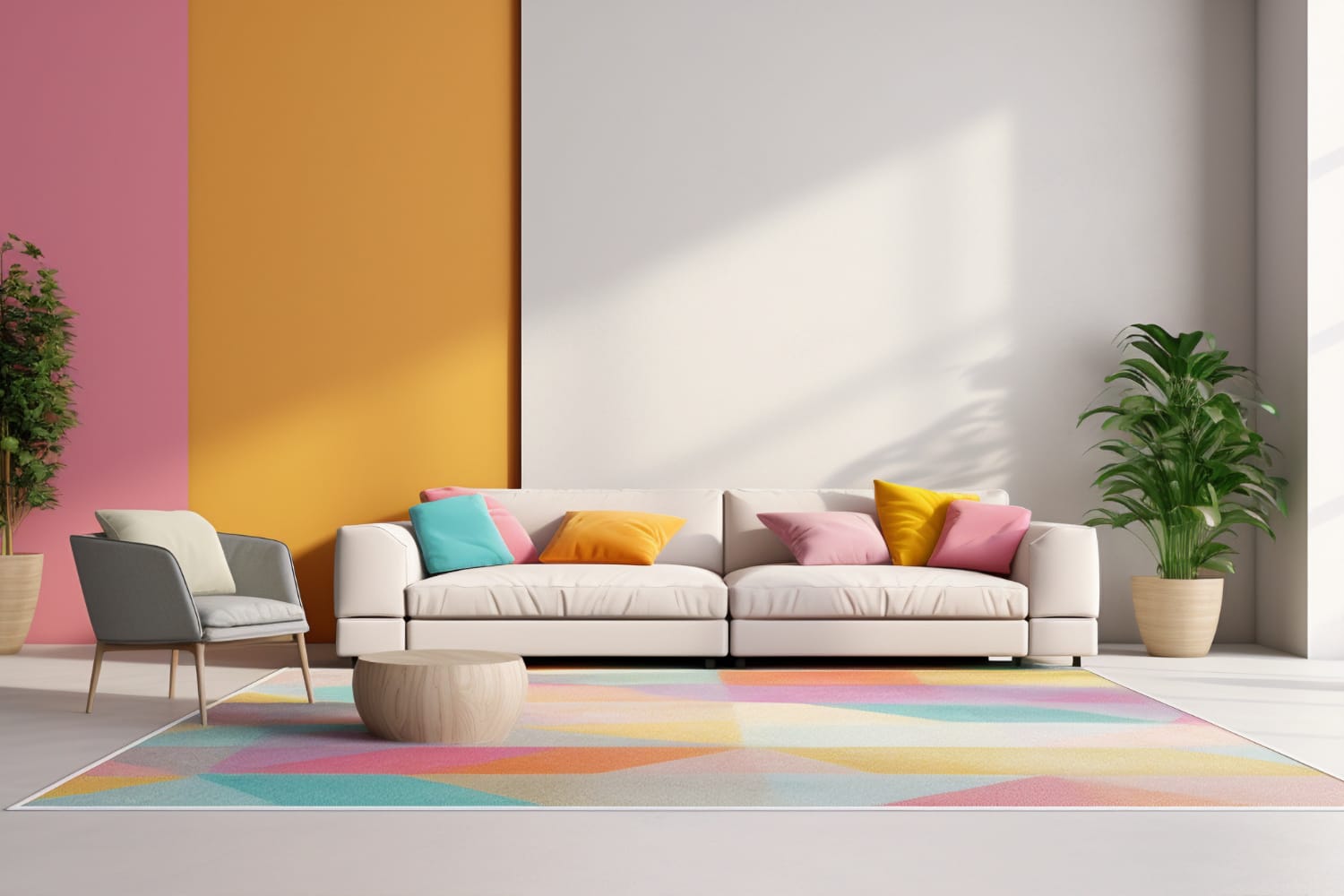
Scandinavian interior design is more than aesthetics, about creating emotional harmony and visual openness. It is important to choose a palette that will reflect sunlight with a moody, bright, and welcoming environment.
- Neutral base – White, beige, and soft grey dominate.
- Soft, muted colors- Pastels or earthy hues add relaxation.
- Occasional strategic color accents- Navy, forest green, or mustard are common in art or textiles.
- Psychological impact of color choices- relaxing colors promote mental clarity.
Furniture Design – Function Meets Form
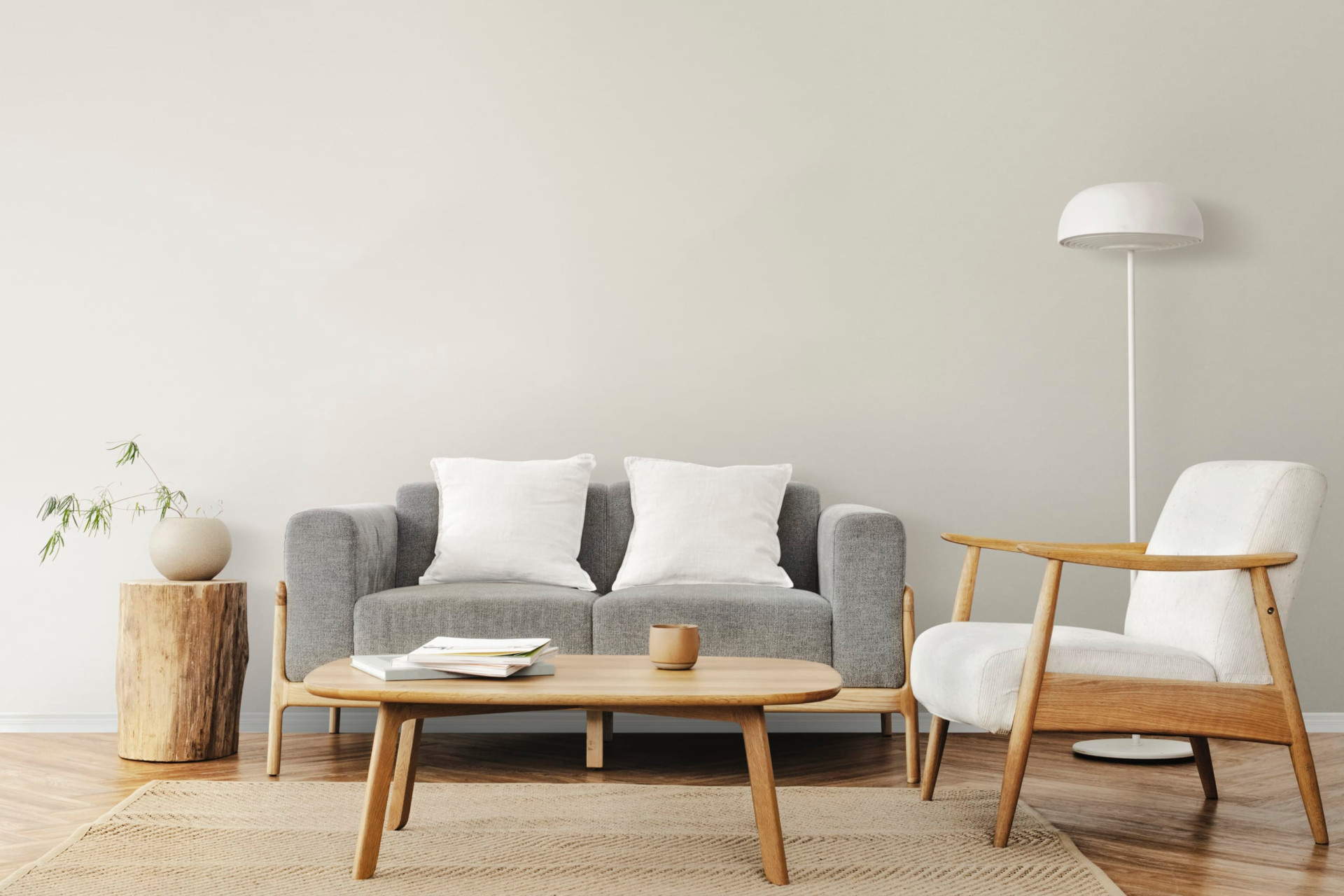
Scandinavian furniture design is globally recognized for its simplicity, craftsmanship, and practical elegance. Every piece is created with a purpose, merging visual clarity with everyday usability.
- Clean lines and geometric shapes- Designs are simple but elegant.
- Functional minimalism- Furniture is practical and space-saving.
- Iconic Scandinavian furniture pieces- Think Ray Loose Lounge Chair, Wishbone Chair, and IKEA’s simple designs.
- Materials used in furniture construction- Light-color schemes, woods like birch and ash, paired with natural fabrics.
Textures and Layers – Bringing warmth
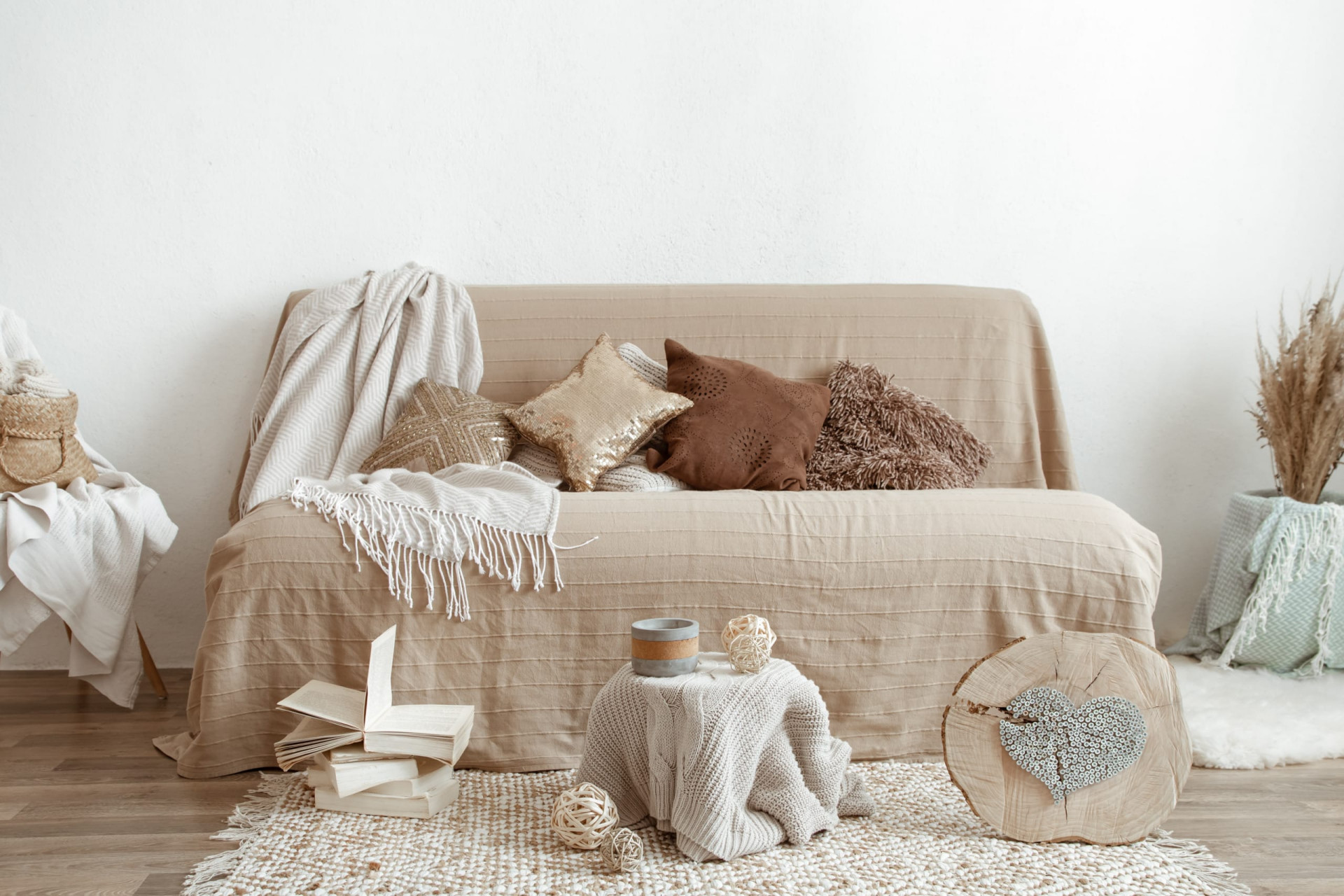
Scandinavian interior design uses easy design principles. It’s never cold or stark. In its place, the designers rely on a rich blend of textures and layers to create a cozy, inviting, and visually appealing space.
- Importance of textural contrast- Wood, wool, linen, and leather mix for visual interest.
- Cozy elements (hygge concept)- Hygge emphasizes comfort and wellbeing through candles, throws, and soft lighting.
- Textile selections- Blankets, cushions, and rugs offer tactile warmth.
- Balancing minimalism with warmth- Layers keep spaces from feeling stark.
Scandinavian Interior Design for Specific Rooms
Scandinavian interior design living room
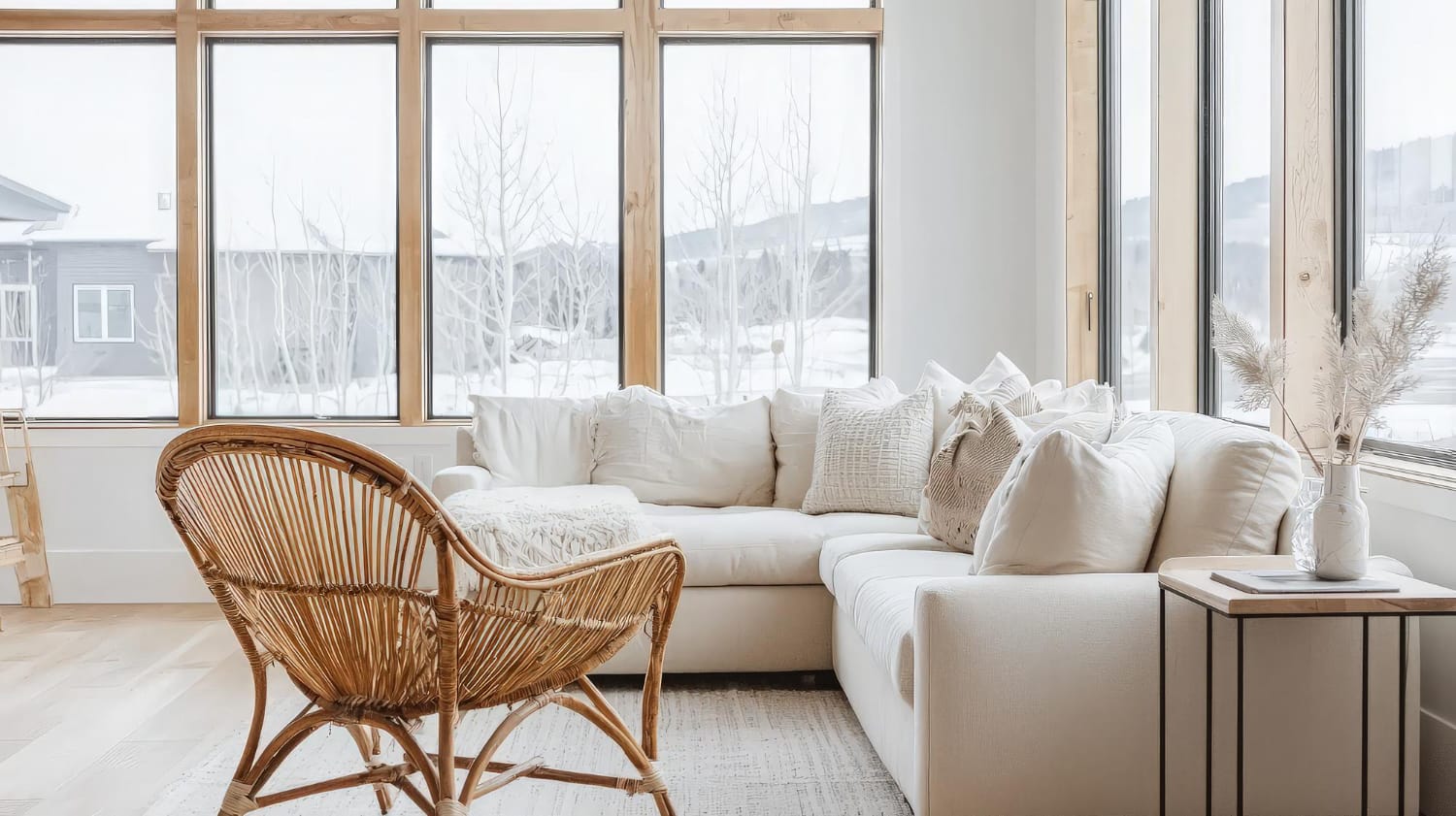
A minimalist Scandinavian interior design living room is a perfect blend of warmth, elegance, and convenience for relaxation, natural flow, and meaningful social interactions. Natural light sources, such as large windows, create an airy, open feeling with clean-lined sofas, minimalist coffee tables, and wood accents.
Here are some features of a modern Scandinavian interior design living room:
- Furniture arrangement: Oriented toward social interaction and sunlight.
- Lighting considerations: Use layered lighting with floor and table lamps.
- Texture and comfort balance: Incorporate soft throws, area rugs, and wood elements.
Scandinavian interior design bedroom
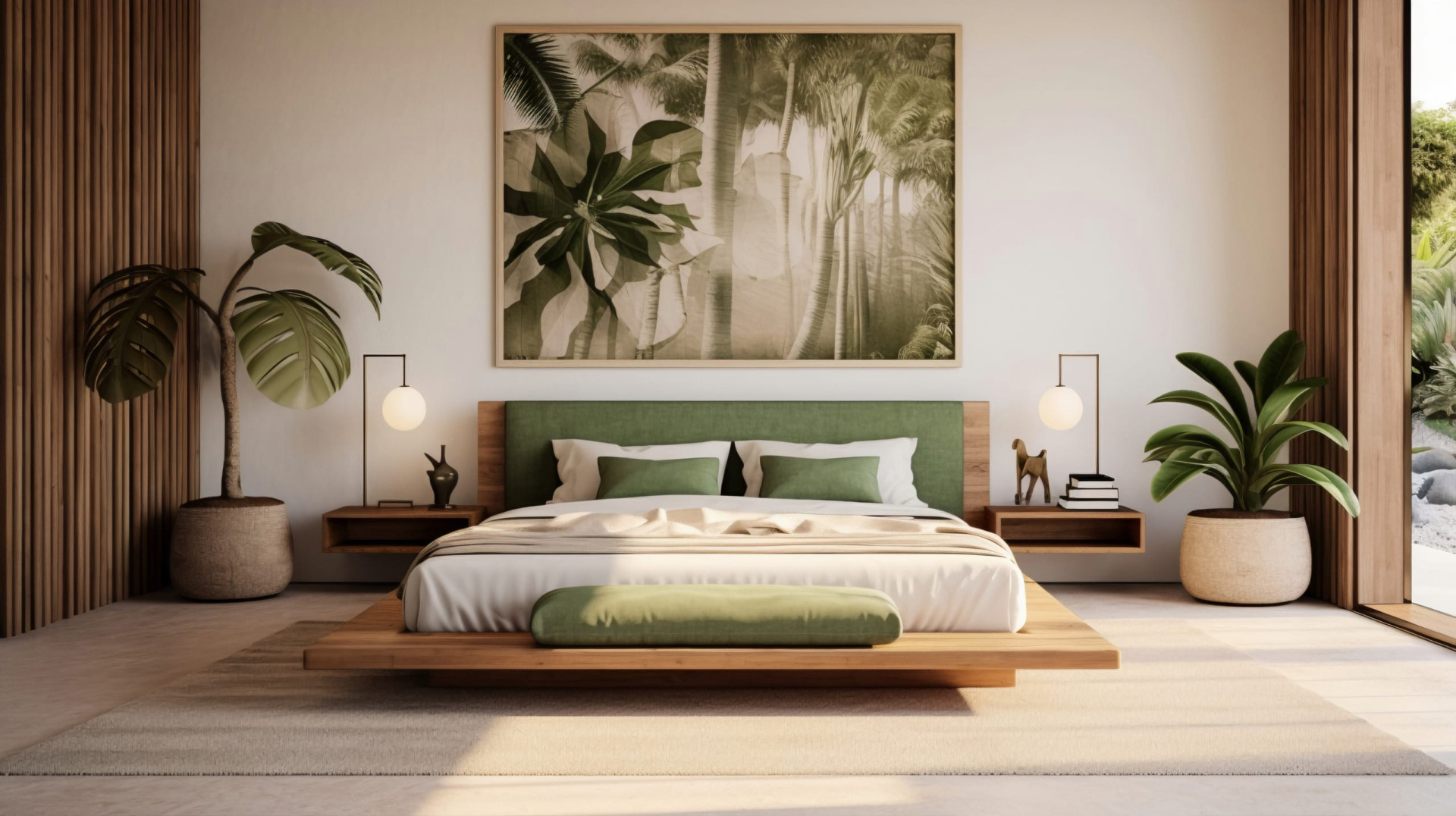
The Scandinavian interior design bedroom embodies peace, warmth, and calmness about creating a restful retreat that promotes relaxation and well-being. Using soft bases like white, beige, light grey, and pale pastels creates an open, relaxed aesthetic. Smart storage solutions, such as built-in wardrobes, under-bed drawers, or minimalist nightstands with hidden compartments, minimize clutter.
- Color Palette: Light and calming tones like white, ivory, soft grey, and dusty pastels.
- Clean Spaces: clean surfaces and organized hidden or integrated storage (under-bed, built-in wardrobes).
- Furniture Design: Simple, functional, and visually light, wooden bed frames, sleek side tables, and minimal décor elements.
- Textile Layers: Soft linen or cotton sheets for breathability, layered bedding, and natural fiber rugs.
- Lighting: Warm bedside lamps, sconces, or soft pendant lights, dim lighting to create a restful, ambient climate.
- Decor & Accessories: Subtle accents like framed artwork, plants, or minimalist wall shelves.
Kitchen Scandinavian Interior Design
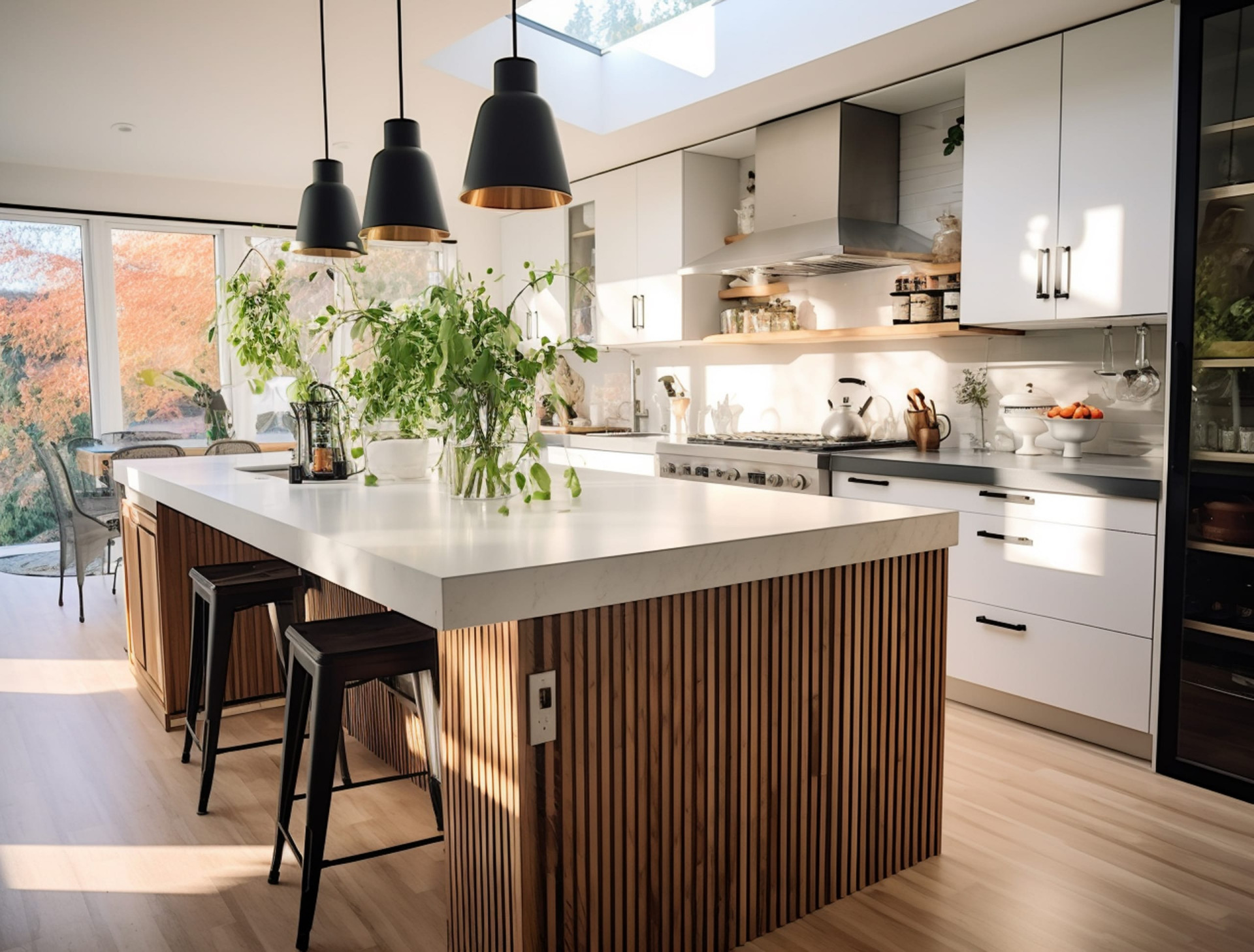
In Scandinavian design, the kitchen and dining interior areas focus on functionality, clean aesthetics, and a natural flow that encourages togetherness. These spaces are often part of an open-plan layout, easily joining living areas to maximize space and social interaction. White cabinets, wood colors, and balanced countertops like stone or concrete reflect light and create a tidy atmosphere.
Here important features of a Scandinavian Kitchen and Dining Area:
- Layout & Flow: Open-plan concepts enhance connectivity and space between kitchen, dining, and living areas.
- Color Scheme: whites, light greys, and pale wood tones for brightness and cleanliness.
- Functional Design: Minimalist cabinetry with clean lines and simple hardware such as quartz, stone, or matte laminate.
- Material Selection: Natural wood for dining tables and open shelves, stone countertops, ceramic tiles, or durable stainless steel appliances.
- Lighting: Pendant lights above kitchen islands or dining tables for both task and mood lighting.
- Decor & Accessories: Simple tableware and ceramics for an artisanal touch, indoor plants, wooden trays, or linen runners.
Home Office Spaces – Ideal for Productivity
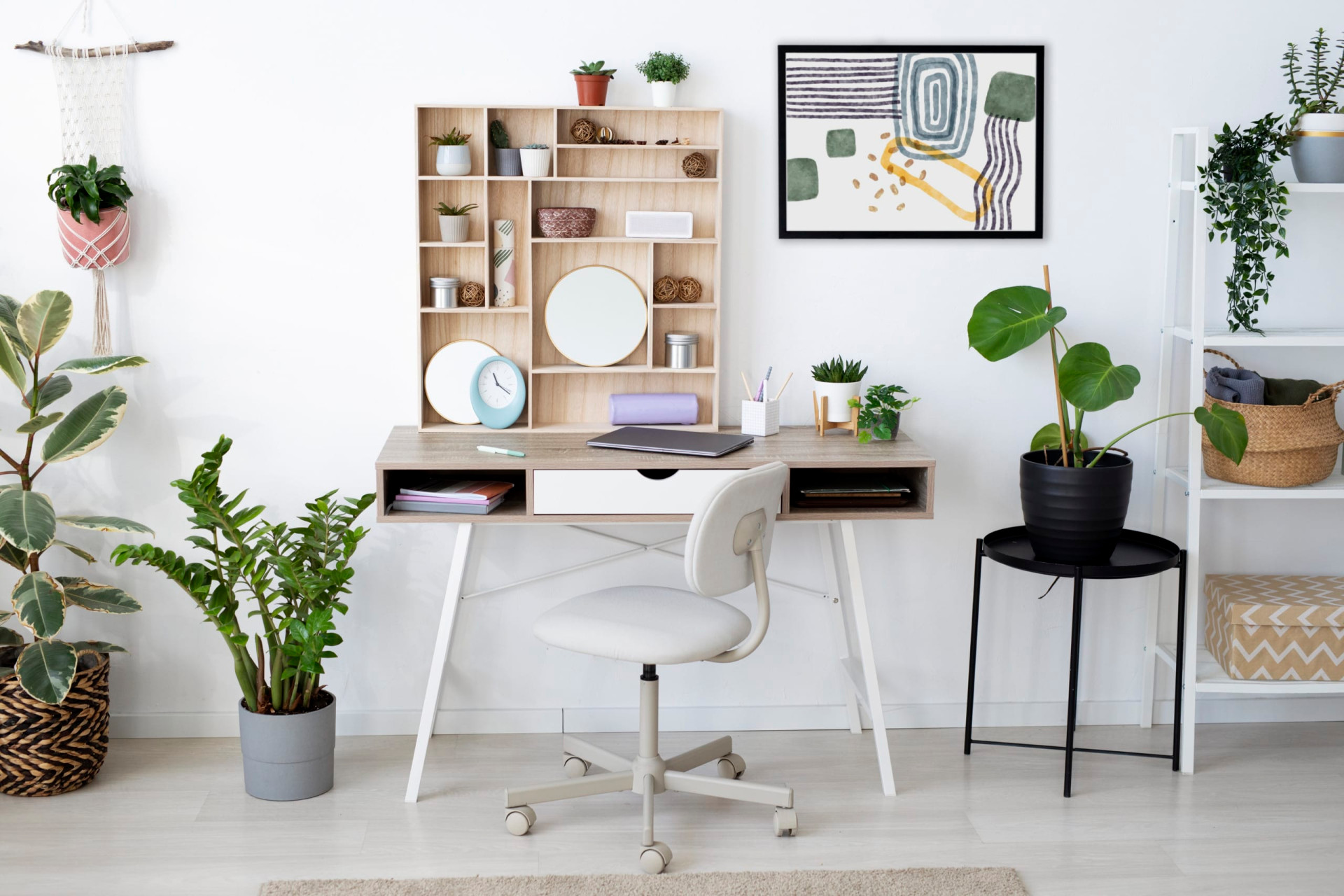
A Scandinavian interior design home office combines beauty and purpose for focus and productivity without taking over. Using ergonomic chairs and sleek wooden desks, the layout is clean and uncluttered. Soft whites, greys, and natural wood tones are used to create a relaxing and non-distracting environment.
Scandinavian home offices have the following key features:
- Ergonomic Design: Desks with ample surface area and healthy posture for long working hours.
- Color Palette: Light shades like white, light grey, and beige enhance clarity and peace.
- Natural Light Utilization: Desks are placed near windows to take advantage of sunlight.
- Minimalist Layout: Clear, uncluttered desktops free from distractions.
- Smart Storage: Floating shelves, minimalist bookcases, and under-desk drawers.
- Mood and Comfort: An air of calmness, cozy textiles and greenery enhance creativity and reduce stress with hygge accents.
Modern Trends and Variations of Scandinavian Design
Interior design in Scandinavia has gracefully evolved with time, blending timeless principles of simple living, usability, and nature-inspired elements with modern day innovation. Contemporary Scandinavian design keeps the signature simplicity but introduces modular layouts, bold accent colors, and updated materials that better reflect today’s lifestyles.
Flexible furniture and spaces are ideal for smaller homes or multifunctional living. Japandi design, which combines Japanese elegance with Scandinavian warmth, is one of the most influential minimalist aesthetics in the world. Nordic-inspired homes are enriched by this cross-cultural influence.
Intelligent technology is also a major trend; voice-controlled lighting, energy-efficient appliances, and hidden chargers and speakers contribute to maintaining a clean, clutter-free look while maximizing functionality.
How DecorAI Helps You Achieve the Perfect Scandinavian Interior Design
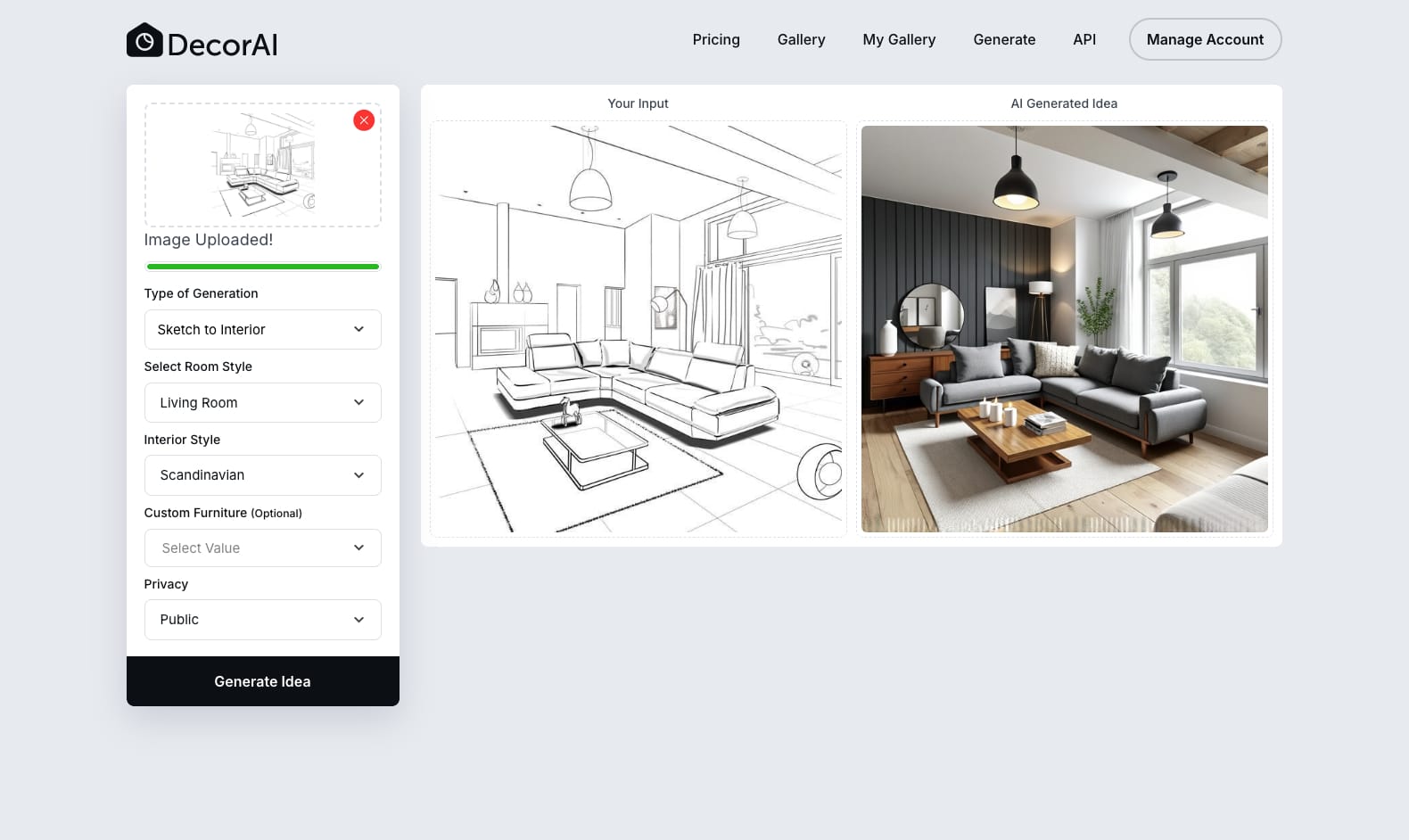
Step-by-step Scandinavian Interior Design guides are available on Decorai. You can easily follow these steps and make ideas as real visual.
1. Upload your photo or scratch
Select a picture from your selection or upload the one you currently have for interior design or redesign.
2. Types of Generation
6 types are available: Sketch to Interior (draw a sketch and upload for output), Room Redesign (the design remains the same, but the color preference and furniture arrangement are changed), Empty Room to Interior (upload an empty room space), Freestyle Interior (upload image command AI for any choice), Style changer (the design and furniture remain the same, but the style changes), Floorplan (draw a raw floorplan, and AI decorates it with furniture).
3. Guidance for each room
Then select a room style from 100+ options, such as Bedroom, Kitchen, Living Room, Study Room, Bathroom, Dining Room, Home Office, Gaming Room, etc.
4. Interior Style Options
There are more than 20+ interior style options for users; you can select Scandinavian.
5. Choose Custom Furniture
There are 100 different types of furniture available, and choosing furniture for any room involves placing functional pieces.
8. Final output:
Decorai makes it easy to create a Scandinavian interior. Upload a photo of your room or floor plan, choose your design mode from design style, and pick Scandinavian style from the selection. You’ll get a fully visual design with customized layouts and furniture options and save 10% with code ’19A3DFB4′ at checkout.
It is recommended that you do not hesitate to use Decorai’s tool for your interior design ideas; you can check out our affordable pricing plans and subscription plans here if you are interested.
Here are 5 useful FAQs about Scandinavian Interior Design that you may be looking for:
1. What is Scandinavian interior design style?
Ans: Scandinavian interior design is a minimalist style that originated in the Nordic countries. It focuses on simplicity, functionality, and beauty, often using neutral colors, materials, and clean lines to create a cozy, organized space filled with light and warmth.
2. How do I decorate my home in Scandinavian style?
Ans: Use neutral colors (white, beige, or grey), combine natural elements like wood and wool, and prioritize minimalist furniture with clean shapes when decorating in Scandinavian style. Make the room cozy with soft textiles, houseplants, and lots of natural light.
3. What are the key elements of Scandinavian design?
Ans: Essential factors include:
- Neutral and light colors
- Natural materials (wood, leather, wool)
- Functional furniture
- Minimalist decor
- A comfortable atmosphere
- Lots of natural light
4. What’s the difference between Scandinavian and minimalist design?
Ans: Both styles value simplicity and clean lines, but Scandinavian design adds warmth and coziness (through textures, natural materials, and soft lighting), whereas minimalist design prefers to be simpler and functional; it has less decorations.
5. Is Scandinavian interior design still popular in 2025?
Ans: Yes, Scandinavian design will be highly popular in 2025 for its classic style, sustainability, and comfort. It’s widely used in modern homes and apartments for its functional beauty, calming aesthetic, and eco-conscious design concept.
Conclusion
Scandinavian interior design continues to be popular because of its honest, minimalist, and nature-inspired design style. Its beauty comes from its ability to create warm, functional, and serene spaces, suitable for modern living. Consequently, Scandinavian style will remain true to your individuality while also feeling relaxed and clean.
You can bring Scandinavian interior design into your home and live beautifully and mindfully. Let Decorai help you visualize, design, and perfect your Nordic-inspired space with ease and creativity.

